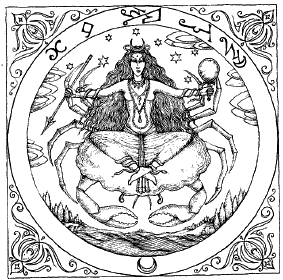Sacred Woods & Trees

Sacred Woods & Trees
Tree Meanings in Folklore
With regards to the “Nine Woods of the Beltane Fire”; ash, birch, yew, hazel, rowan, willow, pine, thorn and all other trees mentioned as being traditionally sacred may be used, with the exception of oak. This is because oak is the king of the woods. The available woods will, of course, differ in different parts of the country; the tradition is simply that the fire should consist of nine woods, with the exception of the oak.
APPLE - This is one of the holy trees possessing magical powers. Its fruit, when cut across, displays the magical sign of the pentagram (five pointed star). Avalon, the old name for Glastonbury, one of Britain’s most sacred centres, means, “The place of the apple-trees.” At Hallowe’en a large apple, called the Allen or Hallowe’en Apple, is eaten for good luck.
ASH - This wood is used for the stang, and in this way it represents the Horned God-King. Dressed with garlands and crossed arrows, the stang is used as an altar. In the old Norse mythology, the World-Tree was an ash, Yggdrasil, the Cosmic Axis.
ASH-FAGGOT - This is made up of ash twigs. It should be burned at Yule to ensure good fortune. This is the origin of the “Yule Log”. A miniature one can be kept in the house for good luck.
BIRCH - This is one of the trees that is traditionally associated with the May Eve celebrations, when people used to go out overnight into the woods and bring home green boughs to decorate their homes for May Day. It is the tree of good luck and purification and as such is used in the making of the besom. It is regarded as being feminine.
BLACKTHORN - This is an ominous tree. The blackthorn staff is sometimes used as an altar stang when a curse is being put to someone. The tree has formidable spines and is associated with the “Blackthorn Winter”, a time of renewed cold in the spring associated with the appearance of the blackthorn blossom.
ELDER - This tree is regarded as unlucky because of its traditional association with Witchcraft. In some parts of Britain it is thought to be female. In olden days judgment was sometimes given under it. Hence the clan sword of judgment is occasionally hafted with elder wood.
HAWTHORN - This is also known as whitethorn and the maytree, because of its time-honored association with May Day. Because it was a sacred tree, it was considered very unlucky to bring in branches or flowers of the hawthorn indoors. However, if used as a decoration outdoors on May Day, it brought good luck.
HAZEL - A holy tree connected with fire, fertility, knowledge, divination and poetry. The favorite wood for a water-diviner’s rod. It is one of the nine sacred woods for the Beltane fire.
OAK - The oak is the king of the woodland, especially if bearing mistletoe. Ancient oaks frequently marked a meeting-place or boundary. This is shown by the number of place-names, such as Gospel Oak, which often survive on the map even though the original tree is still gone. The oak is one of the seven “Chieftain Trees” named in old Irish law, the unlawful felling of which was regarded as a serious crime. The other six were the hazel, apple, yew, holly, ash and pine.
ROWAN - This is otherwise known as the mountain ash. Sprigs of this tree are considered to bring good luck, and protect from the evil eye. Hence an old Celtic salutation was, “Peace be here and rowan tree.”
WILLOW - This was a tree of mourning in olden days and is often referred to as such in old songs and ballads. However, its catkins gathered in May Day could be luck-bringers. It is a water-loving tree and hence traditionally associated with influence of the moon.
YEW - This is the tree of death and resurrection. Some of the oldest yew trees are to be found in churchyards, because of this symbolism. It is a very long lived tree, and because of this and its evergreen foliage it was regarded as a symbol of immortality.

